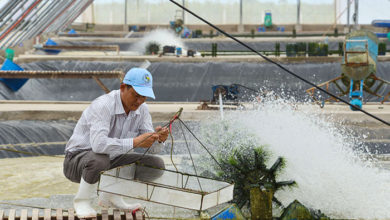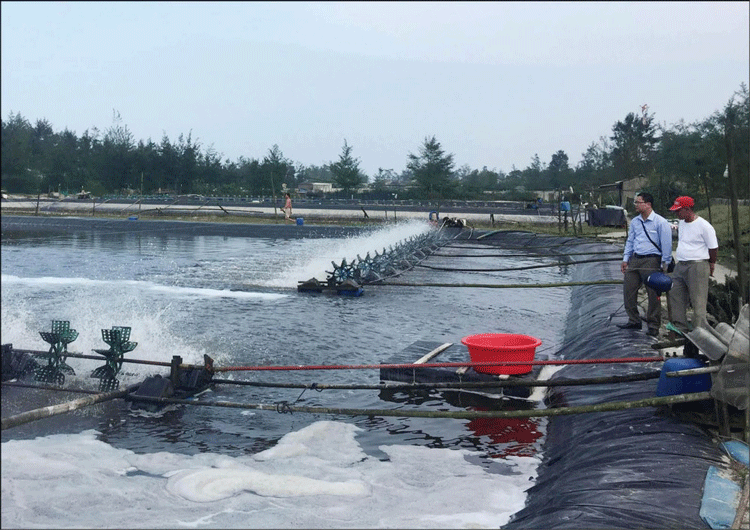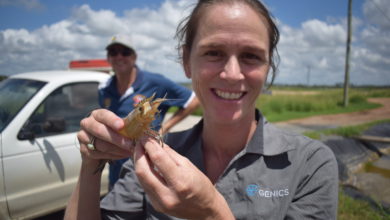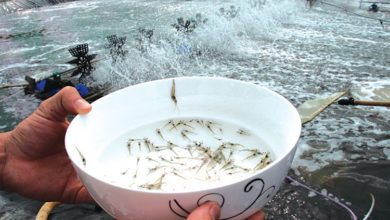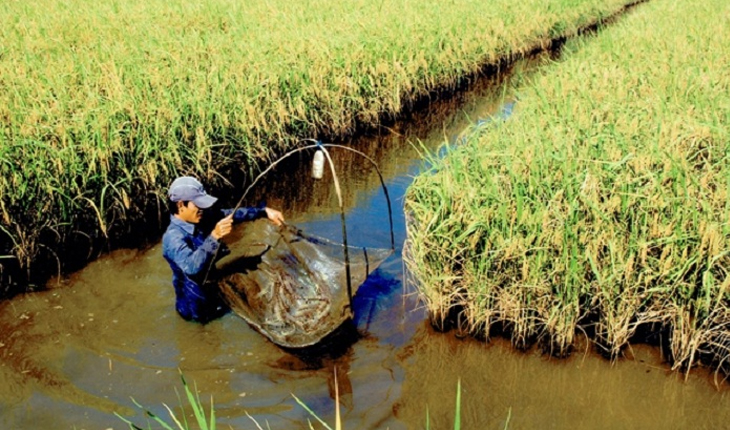Green transition in frozen shrimp processing
Vietnam's seafood processing industry, particularly frozen shrimp processing, is actively transitioning to green production practices in order to reduce emissions and has made significant progress.
Boosting productivity, reducing greenhouse gas emissions
At the recent Aquaculture Vietnam 2024 conference in Ho Chi Minh City, aquaculture expert Dr. Dao Trong Hieu emphasized that reducing emissions during processing could lower emissions across the entire seafood production chain. However, he noted that this approach faces challenges in terms of cost, infrastructure, and energy management.
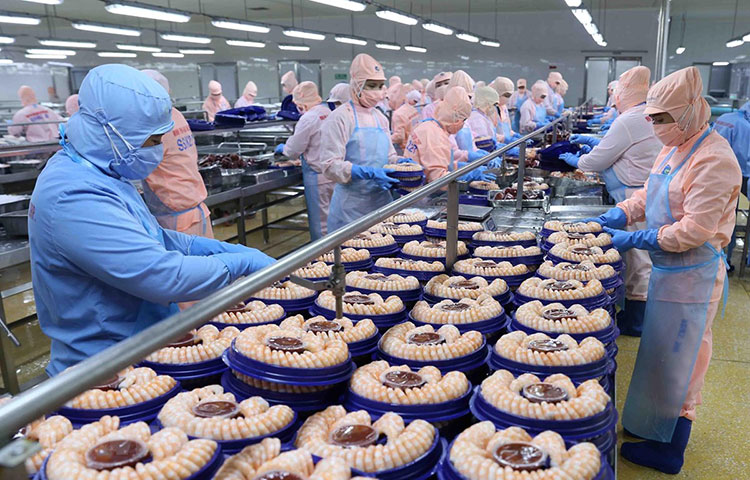
According to Dr. Hieu, a survey of 48 frozen shrimp processing facilities in the Mekong Delta found that all are privately owned, with designed capacities ranging from several hundred to 20,000 tons per year. However, during the 2020-2021 survey period, actual production was only 40-60% of the designed capacity, leaving significant unused capacity and preventing full utilization of production potential.
Electricity consumption in frozen shrimp processing facilities is notably high, averaging 4.11 million kWh annually, with some facilities reaching up to 20 million kWh annually. This contributes indirectly to greenhouse gas emissions. While most businesses have switched to ammonia (NH3) as a refrigerant, 13 out of 48 companies still use Freon 22 (R22), which has an emission factor nearly 2,000 times higher than CO2. Among these, five companies using R22 account for 96.4% of the total R22 consumption across the 13 companies.
The survey results show that emissions per kilogram of shrimp are higher at small-scale processing facilities than at large-scale ones. Facilities with a capacity of over 5,000 tons per year emit only 0.93 kg CO2e per kilogram of shrimp, while small-scale facilities with a capacity under 1,000 tons per year emit 2.89 kg CO2e per kilogram. This suggests that increasing productivity could help reduce greenhouse gas emissions.
The shift towards green production is inevitable
Dr. Hieu stated that 100% of seafood export processing enterprises in Vietnam have implemented quality management programs, food safety standards in accordance with HACCP, and environmental management systems based on ISO 14000. Some companies have also obtained social responsibility certifications under SA8000. Many seafood processing enterprises have adopted cleaner production methods to reduce energy consumption. However, the adoption rate remains low among small enterprises, particularly those focused on domestic consumption.
All processing facilities have replaced incandescent bulbs with LED lights to save electricity. Seafood by-products, solid waste, packaging materials, and other waste are thoroughly collected, stored, and sold to purchasing units. Most facilities have their own wastewater treatment systems or send wastewater to centralized treatment facilities within industrial zones. However, smaller facilities still face challenges. The processing facilities continue to reduce the use of refrigerants. According to incomplete data, 72% of large-capacity refrigeration equipment has been switched from R22 to NH3, despite the high investment costs of replacing the entire system.
According to Dr. Hieu, the green transition in seafood processing, especially in frozen shrimp processing, is currently facing many challenges. Small businesses are still struggling to invest in the infrastructure needed to meet sustainability standards. Raw materials and markets are constantly fluctuating, and the issue of “high yield, low price” continues to persist. These factors prevent processing facilities from fully utilizing their resources and designed capacity, inadvertently leading to higher emissions per kilogram of product.
The actual capacity of the current processing facilities only reaches 40-60% of their designed capacity. Therefore, we do not encourage the expansion of processing facilities. Instead, Dr. Hieu emphasized that the existing facilities should maximize their current capacity to meet output and market demand.
What solutions can accelerate the green transition process?
Dr. Dao Trong Hieu affirmed that the green transition process will be accelerated, as government regulatory agencies are set to impose import taxes in the near future and eventually halt the import and production of refrigerants with high greenhouse gas emissions. By 2040, the use of ozone-depleting refrigerants will be phased out.
Dr. Dao Trong Hieu believes that accelerating the green transition requires coordinated solutions. Given the high electricity consumption, investing in and using solar power systems are essential to improve efficiency and reduce emissions.
The replacement of harmful refrigerants in seafood processing facilities, especially small-scale ones, should be expedited to achieve a complete phase-out by 2040. Enhance production processes, energy management, and refrigeration equipment operations to reduce underloading. Strictly manage ice production and usage, optimize cold storage and air conditioning, and switch to LED lighting from incandescent bulbs.
Regularly inspect, repair, and maintain refrigeration equipment to enhance cooling efficiency; Implement cleaner production practices to conserve raw materials, reduce emissions, and improve production efficiency; Collect, treat, and fully recycle solid waste, wastewater, and exhaust gases at the seafood processing plant; Maintain and uphold sustainable production certifications
The key is to stabilize the input and output in order to enhance the performance of energy-consuming devices, especially cooling systems. This will gradually increase the actual processing capacity to align with the design capacity, thereby improving efficiency and reducing emissions per unit of product.
VFM
The average greenhouse gas emissions at 48 frozen shrimp processing facilities in the Mekong Delta are 1.39 kg CO2e per kg of shrimp, which is lower than the average of 2.5 to 4 kg CO2e per kg observed in other countries.


